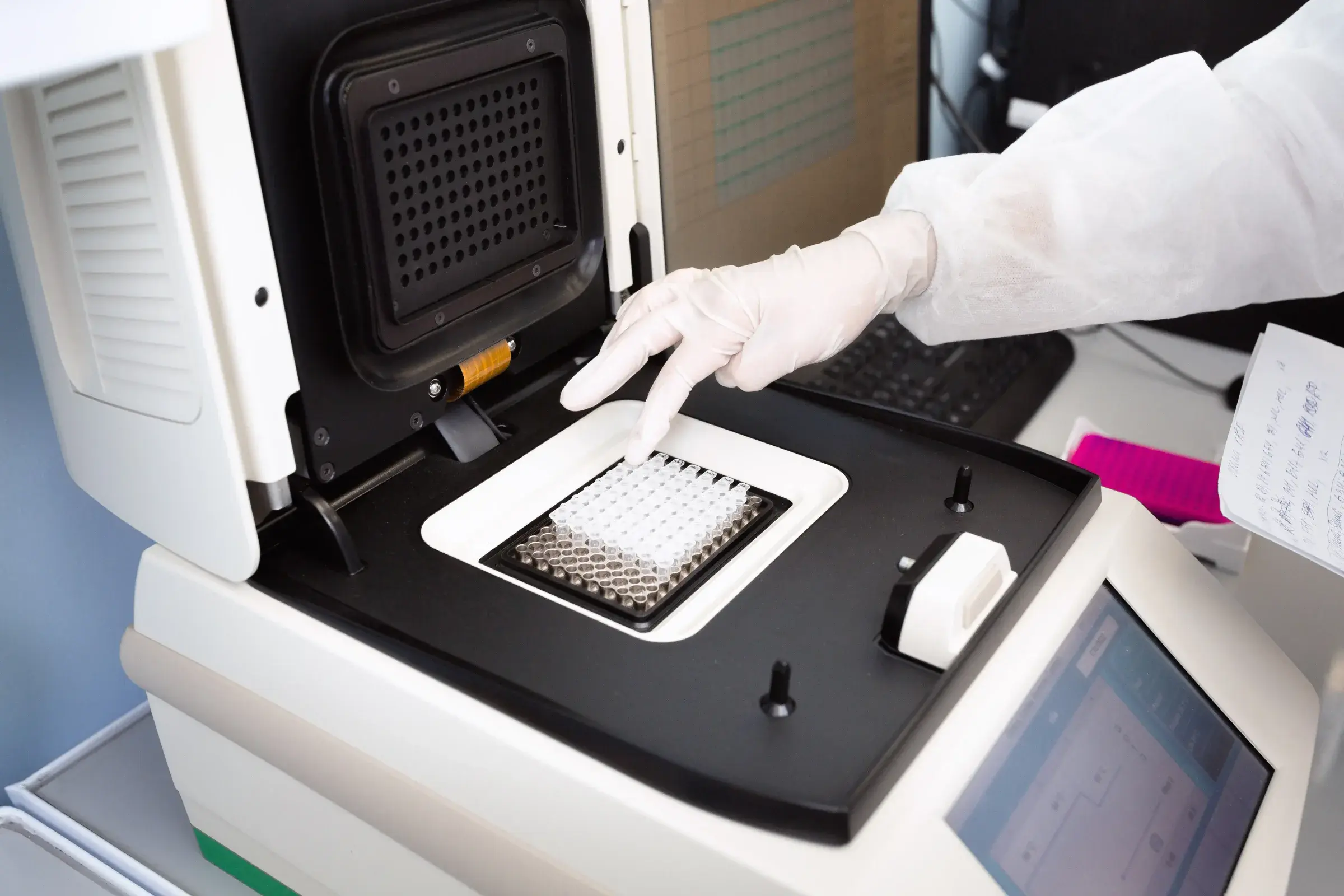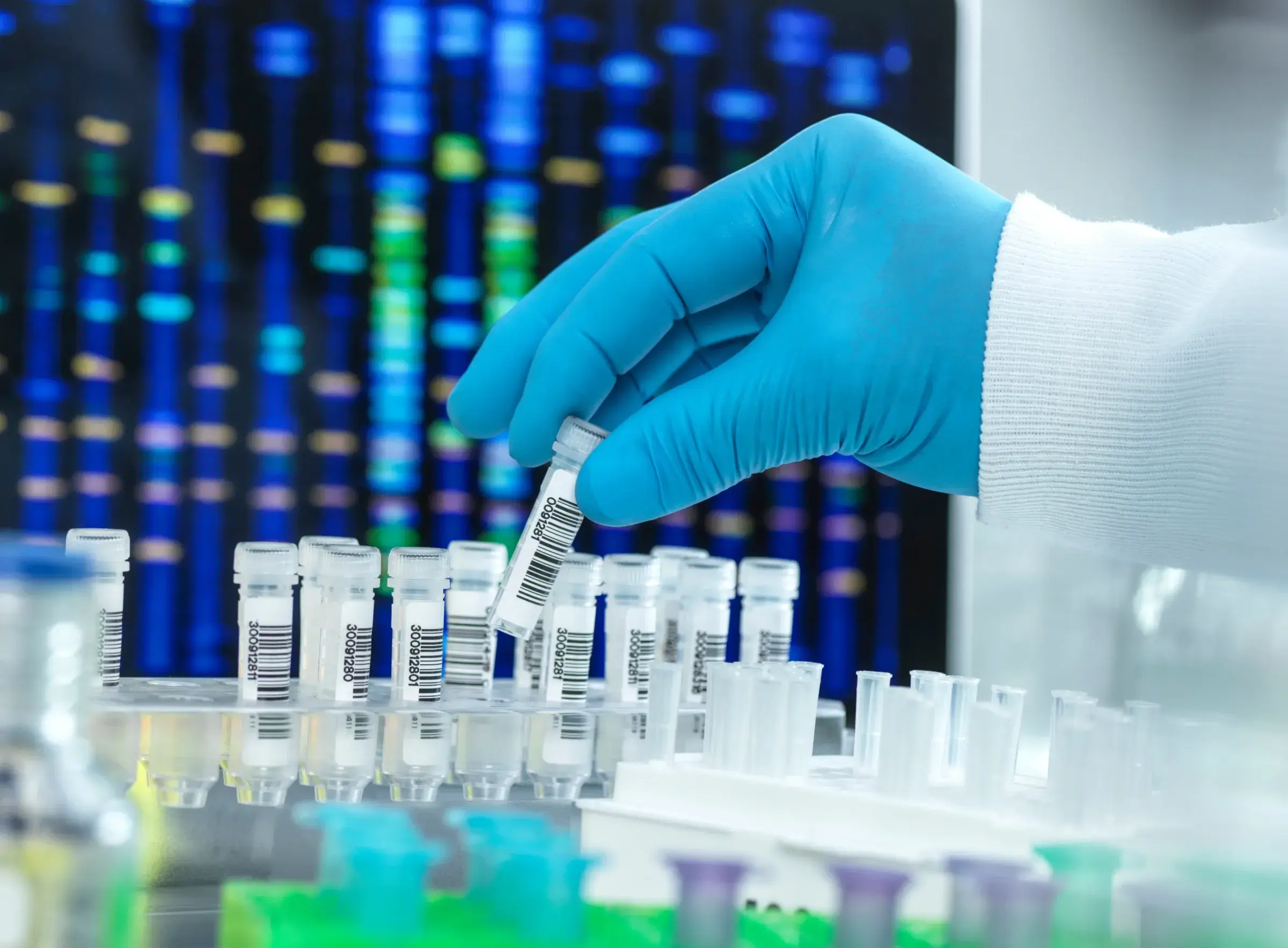Absolute Abundance
Measuring absolute abundance, or the total microbial load, is vital for a thorough understanding of microbiome composition. While relative abundance highlights the distribution of different species within a sample, absolute abundance reveals the actual microbial count, offering a clearer perspective on community dynamics.
Our Quantitative Microbiome Profiling (QMP) service provides accurate microbial quantification, enabling a deeper and more complete analysis of your microbiome data.
Absolute Abundance
Measuring absolute abundance, or the total microbial load, is vital for a thorough understanding of microbiome composition. While relative abundance highlights the distribution of different species within a sample, absolute abundance reveals the actual microbial count, offering a clearer perspective on community dynamics. Our Quantitative Microbiome Profiling (QMP) service provides accurate microbial quantification, enabling a deeper and more complete analysis of your microbiome data.
What is Absolute Abundance?
Understanding the total number of microbes present in a sample, known as absolute abundance or microbial load, is crucial for in-depth microbiome analysis. While relative abundance provides information on the proportion of different microbial species within a sample, absolute abundance reveals the actual quantity of microbes, offering deeper insights into microbial community dynamics.
For example, two samples might both contain 50% of bacterial species A and 50% of bacterial species B.
However, if one sample has 2 million bacterial cells and the other has 20 million, their microbial loads are vastly different. Absolute abundance complements relative abundance data, enabling a more accurate interpretation of microbiome studies, particularly in contexts like human and animal health where microbial overgrowth or treatment efficacy is assessed.
Why Measuring Absolute Abundance Matters?
Absolute abundance uncovers insights that relative abundance alone can miss:
-
Clarifies Microbial Shifts: It distinguishes true increases or decreases in microbial populations, avoiding misinterpretations caused by relative proportions.
-
Identifies Imbalances: Helps detect microbial overgrowth or depletion—crucial in health, agriculture, and therapeutic studies.
-
Enables Reliable Comparisons: Quantifying total microbial load improves reproducibility across samples, studies, and time points.
-
Supports Clinical & Regulatory Needs: Provides robust, quantitative data often required for diagnostics, treatments, and compliance.
-
Enhances Multi-Omic Analysis: Offers a solid foundation for integrating microbiome data with host response, metabolomics, or other omics layers.
Quantitative Microbiome Profiling (QMP) Services
We offer Quantitative Microbiome Profiling (QMP) services to determine absolute microbial abundance in your samples. QMP enhances the value of your microbiome data by integrating quantitative measurements, providing a complete picture of microbial community structure.
Several methods are available for quantifying microbes in a sample:
-
Spike-In Controls: Addition of known quantities of an external microbial species absent from the sample to calculate both relative and absolute abundances.
-
Quantitative PCR (qPCR): Amplification and quantification of target DNA sequences.
-
Flow Cytometry (Cell Counting): Direct counting of microbial cells.
We specialize in the two most efficient methods — spike-in controls and qPCR.

Spike-In Controls
The spike-in method involves adding a known quantity of an external microbial species to your sample before DNA extraction. Since the spike-in species undergoes the same processing steps as the sample microbes, it accounts for any biases introduced during DNA extraction and sequencing. This method allows for precise calculation of both relative and absolute abundances.
Quantitative PCR (qPCR)
qPCR quantifies microbial DNA by amplifying specific DNA sequences. This method allows for calculation of both relative and absolute abundances without sacrificing sequencing reads. However, it can be affected by DNA extraction biases, as extraction efficiency may not be perfectly linear.
Integrating Absolute Abundance with Microbiome Sequencing
Our QMP services are fully compatible with both marker gene analysis (amplicon sequencing) and shotgun metagenomics. This flexibility ensures that you can integrate absolute abundance measurements into your preferred microbiome analysis workflow, enhancing the depth and reliability of your results.
-
Marker Gene Analysis (Amplicon Sequencing): Quantify specific microbial groups by targeting genes like 16S rRNA, ITS, or 18S rRNA.
-
Shotgun Metagenomics: Assess the entire microbial community by sequencing all genetic material present in the sample.

Key Benefits of Our QMP Services
-
Accurate Microbial Load Assessment: Gain precise measurements of total microbial abundance in your samples.
-
Enhanced Data Interpretation: Integrate absolute abundance data with relative abundance for a more complete microbiome analysis.
-
Expert Guidance: Our experienced team provides personalized support to determine the best quantification method for your study.
-
Optimized Protocols: Benefit from validated protocols that minimize biases and maximize data quality.
Applications of Absolute Abundance Data
Absolute abundance data expands the utility of microbiome research across a range of applications:
-
Clinical Diagnostics & Therapeutics: Monitor microbial overgrowth, dysbiosis, and treatment efficacy with quantitative benchmarks, particularly in conditions like IBD, infections, and metabolic disorders.
-
Animal & Agricultural Health: Track microbial load in livestock or soil to optimize health, productivity, and sustainable practices.
-
Probiotic & Prebiotic Development: Quantify the actual impact of interventions on target microbial populations, supporting evidence-based product claims.
-
Environmental Microbiology: Measure microbial load in water, soil, or built environments to assess contamination, remediation success, or ecological health.
-
Longitudinal & Interventional Studies: Improve accuracy in time-series research by capturing true microbial changes, not just shifts in proportions.
-
Antibiotic Treatments: Quantify reductions in microbial load post-treatment to assess antibiotic impact and support antimicrobial stewardship.
-
Microbial Establishment & Re-establishment: Track the colonization of microbiota in early life (e.g. infants) or recovery phases (e.g. post-antibiotic), providing insight into microbiome resilience and succession.
Frequently Asked Questions
What is the difference between relative and absolute abundance in microbiome studies?
Relative abundance measures the proportion of each microbial species within a sample, while absolute abundance quantifies the actual number of microbial cells or gene copies. Absolute abundance provides a more accurate view of microbial load and helps detect real changes in population size. Absolute abundance is an additional layer to the relative data provided, so you still have the option to look at the data as relative.
How does Quantitative Microbiome Profiling (QMP) work?
QMP combines microbial sequencing with quantitative techniques—such as spike-in controls or qPCR—to measure the total number of microbes in a sample. This allows researchers to interpret microbial shifts with greater accuracy and depth.
Which method is better for microbial quantification: spike-in or qPCR?
Both methods are effective but serve different needs. Spike-in controls offer high accuracy by accounting for extraction and sequencing biases, while qPCR is faster and suitable for targeted quantification when specific organisms are of interest.
Can absolute abundance be used in shotgun metagenomics?
Yes, absolute abundance can be integrated into shotgun metagenomics workflows. By pairing sequencing data with quantification methods like spike-ins or qPCR, you can assess both community composition and total microbial load.
Why is absolute microbial load important for gut health research?
Microbial load plays a crucial role in understanding gut health, as both overgrowth and depletion of specific microbes can impact inflammation, immunity, and nutrient absorption. Absolute abundance helps identify these imbalances with precision, guiding more effective interventions.
References
Vandeputte, D., Kathagen, G., D’hoe, K. et al. Quantitative microbiome profiling links gut community variation to microbial load. Nature 551, 507–511 (2017). https://doi.org/10.1038/nature24460
Morton, J.T., Marotz, C., Washburne, A. et al. Establishing microbial composition measurement standards with reference frames. Nature Communications 10, 2719 (2019). https://doi.org/10.1038/s41467-019-10656-5